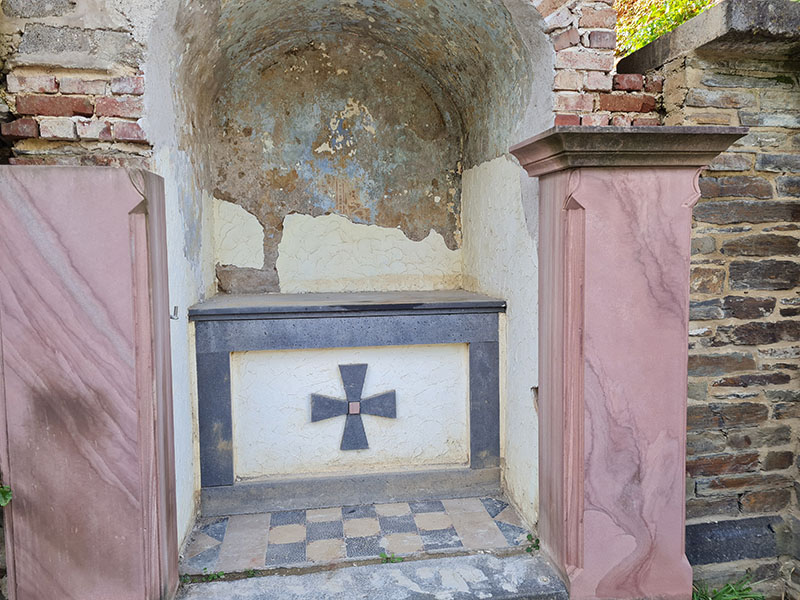It was an impressive excursion to the Ahr Valley organised by the Bonn-Rechtsrheinisch Monument and History Society on Saturday, 23.09.2023.
By coach and under expert guidance, they first went to Ahrweiler to the Schützenmuseum, where art historian Dr Ulrich Eltgen from Linz explained how he is carrying out the voluntary restoration of a wooden Quirinus figure from 1880. This statue, previously already a victim of woodworm, had lain in muddy water for an estimated half a day, causing considerable damage to the exterior.
With a clay substance, broken and cracked parts are now remodelled and inserted with a special adhesive. The latter has a special meaning: should the figure require renewed restoration in the future, the inserted part can be removed relatively effortlessly with the appropriate expertise. Flaked paint is first painted over with a special protection and then remixed, not according to the RAL standard, but by eye. A Sisyphean task that takes several months.
The next destination of the trip was Rech, where the remains of the three-hundred-year-old listed Nepomuk Bridge had been demolished against considerable opposition a few months ago. The German Foundation for Monument Protection, citizens' initiatives and online petitions had lost their battle to give back part of the distinctive townscape to the Ahr valley by restoring the historic river crossing.
In Mayschoss, the group visited a small wayside chapel that is being restored under expert guidance by members of the Jugendbauhütte of the Deutsche Stiftung Denkmalschutz.
The highlight of the trip was the Hubertus Chapel in Hönningen, which had been renovated by Eltgen on a voluntary basis and also with the help of the Jugendbauhütte. The chapel, consecrated in 1610 and renovated in 1827 and 1912, had suffered severe damage during the flood. This place of worship, popular with pilgrims in earlier centuries, revealed its secret during the restoration work, a depiction of purgatory painted on the back of the altar wall.
Finally, in Dümpelfeld, the group looked at the railway bridge built in 1910, which, like so many bridges in the Ahr valley, is clad in rubble stone and is also on the municipality's demolition list, although there are proposals for another use, e.g. as a bicycle bridge over the Ahr or as an event location.
The trip ended with a visit to the Strohe inn in the village, where the participants fortified themselves for the return journey to Vilich.
Here are some links for those interested:
Hunting lodge construction in the Ahr valley
Road bridges from the Wilhelmine era
Here are some impressions:













Hubertus Chapel in Hönningen: Front of the altar

Hubertus Chapel in Hönningen: Back of the altar, painting with depiction of purgatory discovered during restoration


Way Chapel in Mayschoss

Dr Ulrich Eltgen in front of a renovated house with a high-water mark

Rifle Museum and restored house façade

Rifle Museum and restored house façade
